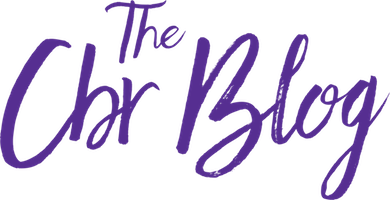We already know that newborn stem cells (like those found in cord blood and cord tissue) can seek out injured parts of the body and help start repair. But did you know they may also target parts of the brain, potentially helping to treat diseases like ALS and Parkinson’s?
Let’s see the latest news on newborn stem cells and neurodegenerative diseases (NDs), including ALS and Parkinson’s.
What Is A Neurodegenerative Disease?
Neuro = brain. Degenerative = to break down.
NDs are a group of conditions characterized by progressive destruction of the brain and nervous system. Major examples of NDs include:
- Alzheimer’s disease
- Parkinson’s disease
- Amyotrophic lateral sclerosis (ALS)
Over time, these diseases can limit memory, movement, speech, and even necessary life functions like breathing. Most NDs have no cure and cannot be prevented. And although currently available treatments are not ideal, newborn stem cells could be a huge game-changer.1,2

Stem Cells Bring New Opportunities
Unfortunately, our brains have a limited ability to repair or regenerate themselves. Mesenchymal stem cell (MSCs), however, may provide some hope in the following ways:
- Homing: MSCs can migrate to the injured region of the brain.
- Signaling: MSCs can secrete factors (like exosomes) that send signals to other cells to reduce inflammation and help repair tissue.
- Immunoregulation: MSCs can regulate the body’s immune response by suppressing and/or activating cells of the immune system.

Adapted from Yao, Zhou, Zhu & Yu, 2020, Figure 1.
ALS: Stem Cells in Action
Helping those affected by ALS is slow-moving—there just aren’t a lot of treatment options. MSC therapies, however, could open doors for future patients.
For example, a recent study published in the International Journal of Medical Sciences showed that bone marrow mesenchymal stem cells (like those found in cord tissue) infused into patients’ spinal fluid provided short-term improvement to the speaking abilities for most of the twelve adults with ALS!
Beyond this small study, companies like BrainStorm are busy researching the different mechanisms by which these stem cell therapies might operate. Translation: They want to understand just how stem cells are creating their therapeutic effects.
Through unlocking these mechanisms, scientists hope to fine-tune their applications and assist in the approval of effective treatments.
More Trials, More Opportunities
Researchers are especially interested in using newborn stem cells for NDs for three main reasons: Newborn stem cells have a higher concentration of stem cells than other sources, their collection is noninvasive and ethically acceptable, and they have high regenerative potential.4
What’s even more exciting? Clinical trials are underway! Research is still early, so there aren’t any approved treatments just yet, but the use of newborn stem cells has been considered in trials for ALS, Alzheimer’s, and Parkinson’s.3–5
Since most NDs don’t occur until later in life, preserving your child’s newborn stem cells is a smart investment in their future health—one that could help protect them for the rest of their lives.

If you missed it, check out our recent announcement on how we’re partnering with NantKwest, a clinical-stage immunotherapy company, to develop a COVID-19 treatment using newborn stem cells. This partnership is a first step toward creating a therapy that addresses symptoms of COVID-19.
As always, we’ll keep you posted as the science moves forward. Keep on the lookout for our next article, and don’t forget to share with friends and family!
Expecting a child? Have friends or family who are expecting? Enroll with us today or log into your account for your unique referral code. When someone you refer banks with CBR, you’ll get one year of free cord blood storage—and they’ll receive special pricing on our newborn stem cell bundle!*
*This program applies only to existing CBR clients (“Referring Clients”) referring new clients to CBR (“Referred Clients”); one cannot qualify as a Referred Client under this program if he/she already stores newborn stem cells with CBR. Referred Client must enroll using referral link provided by Referring Client or mention Referring Client when enrolling over the phone. Referred Clients will receive a discount of $200 when storing both cord blood and cord tissue or $100 when storing one of cord blood or cord tissue. This program may not be combined with other offers; Referred Clients aware of other promotions will receive the greater (but not combined) discount amount if mentioned at time of enrollment. Once the Referred Client has stored, the Referring Client will receive a credit on their account for one free year of cord blood storage (a value of up to $175). This program does not offer any credit for cord tissue storage. Referring Clients will also be eligible to redeem for $100 gift card when their second Referred Client has stored, and $200 gift card when their third Referred Client has stored. Gift card promotion valid June 01, 2016 – December 31, 2020 and is being run through a third-party vendor of CBR and is subject to additional terms. This program is subject to change at any time at the discretion of CBR. By participating in this program, you agree to additional terms which can be reviewed here.
References:
1. Neurodegenerative Diseases. MedlinePlus. https://medlineplus.gov/degenerativenervediseases.html. Published July 14, 2020. Accessed August 18, 2020. 2. Yao P, Zhou L, Zhu L, Zhou B, Yu Q. Mesenchymal Stem Cells: A Potential Therapeutic Strategy for Neurodegenerative Diseases. European Neurology. 2020;83(3):235-241. doi:10.1159/000509268 3. Barczewska M, Maksymowicz S, Zdolińska-Malinowska I, Siwek T, Grudniak M. Umbilical Cord Mesenchymal Stem Cells in Amyotrophic Lateral Sclerosis: an Original Study. Stem Cell Reviews and Reports. 2020. doi:10.1007/s12015-020-10016-7 4. Galieva LR, Mukhamedshina YO, Arkhipova SS, Rizvanov AA. Human Umbilical Cord Blood Cell Transplantation in Neuroregenerative Strategies. Front Pharmacol. 2017;8:628. Published 2017 Sep 8. doi:10.3389/fphar.2017.00628 5. Verter F, Couto PS, Bersenev A. A dozen years of clinical trials performing advanced cell therapy with perinatal cells. Future Sci OA. 2018;4(10):FSO351. Published 2018 Oct 26. doi:10.4155/fsoa-2018-0085



What about using stem cells for grandparents and parents?
As far as actual genetic matching percentages, the baby is a 100% match to their own cells, parents are always a 50% match. Relatives like grandparents, aunts, uncles, and cousins generally can be no more than a 50% match. For transplant medicine, 50% match or better is generally preferred. Researchers are still working to understand what matching requirements, if any, are necessary for regenerative medicine. Ultimately, the use of the newborn stem cells is up to the treating physician, who will consider several factors, like the diagnosis, genetic matching, and how the cells would be used.
Here’s a quick (and cute!) video on how matching works: https://youtu.be/ZXiXh75pb3g
If you’d like to learn more about how genetic matching works, the potential of regenerative medicine, and answers to other questions, our educators can help at 888.240.1996
May we post questions here? If so, curious if newborn stem cells are useful just for the person they were harvested from, or beyond?
Ultimately, the use of the newborn stem cells is up to the treating physician, who will consider several factors, like the diagnosis, genetic matching, and how the cells would be used — in transplant or regenerative medicine.
As far as actual genetic matching percentages, the baby is a 100% match to their own cells, full siblings have a 75% chance of being at least a partial match, and parents are always a 50% match. Relatives like grandparents, aunts, uncles, and cousins generally can be no more than a 50% match. For transplant medicine, 50% match or better is generally preferred. Researchers are still working to understand what matching requirements, if any, are necessary for regenerative medicine.
Here’s a quick (and cute!) video on how matching works: https://youtu.be/ZXiXh75pb3g
If you’d like to learn more about how genetic matching works, the potential of regenerative medicine, and answers to other questions, our educators can help at 888.240.1996
I was recently diagnosed with Multiple Sclerosis. We’ve stored by son’s cord blood with you since 2008. Is there any research using cord blood for the treatment of MS? thank you.
We’re sending our best to you and your family. 💜💜 You may want to fill out this form so one of our clinical specialists can call you to review the information in more detail: https://www.cordblood.com/client-center/#/login?page=adv-science
Hello,
Thank You for notification. Would like to ask You kindly sent me more detailed information abut use of Stem Cells in treating neurological conditions.
Thank You in advance.
Boris
Please give us a call and we’d be happy to help answer any questions you might have.
i am very interested in any new information relating to als this stem cell news is exciting
Stem Cures could be one of the best to try when it comes to cases like this.
check here
This is such a very positive news! Everyone has hope now!
ohio stem cell treatment center
What a wonderful news, this will help many patients who has diseases like ALS and Parkinson’s. It will bring hope to those people. Please keep updating this post about the treatment and its effectiveness. Reach us out!
What a wonderful news, this will help many patients who has diseases like ALS and Parkinson’s. It will bring hope to those people. Please keep updating this post about the treatment and its effectiveness. Reach us out!
i read alot of positive reviews on Kycuyu Health Clinic and their success rate with the ALS Herbal treatment and i immediately started on the treatment. Just 10 weeks into the ALS Herbal formula treatment I had great improvements with my coordination, speech, breathing and muscle movements. I have basically gone stronger than i’d thought i could ever be again, visit Kycuyu Health Clinic official website kycuyuhealthclinic The fatigue and general muscle weakness had also declined, this treatment is nothing less of a miracle!